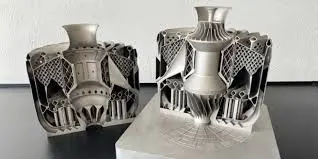As a key aspect of 3D printing, acrylonitrile butadiene styrene (ABS) has become a widely used thermoplastic material due to its versatility, affordability and ease of use. ABS is a Terpolymer consisting of three monomers: acrylonitrile, butadiene and styrene. This unique monomer combination provides ABS with its unique features, making it ideal for a wide range of applications including rapid prototyping, modeling and production of parts.
In the context of 3D printing, ABS is often used for its high impact, toughness and ability to withstand extreme temperatures. It is also relatively cheap compared to other thermoplastics, making it an attractive option for mass production. Additionally, post-processing can be performed using various techniques such as grinding, painting and bonding to achieve a high gloss or to bond multiple parts together.
One of the main advantages of using ABS in 3D printing is its ability to have high dimensional accuracy and precision parts. ABS can be printed using a variety of 3D printing techniques, including Fusion Deposition Modeling (FDM) and Stereo-Lithography (SLA). FDM is the most common method because it allows the creation of complex geometry and structures with high precision.
However, the use of ABS in 3D printing also has some limitations and challenges. One of the main concerns is the discharge of styrene smoke during printing, even if not properly ventilated, which can be harmful to human health. Additionally, ABS may be prone to warping and shrinkage, especially when printed in large or high temperature environments.
To overcome these challenges, 3D printing parameters such as temperature, layer thickness and fill density must be optimized to ensure high-quality ABS parts are produced. Additionally, using a heating chamber or a temperature controlled environment can help minimize warpage and shrinkage.
In short, ABS is a versatile and widely used thermoplastic material in 3D printing, providing a range of benefits including high impact, toughness and affordability. While it presents some challenges, such as styrene flue gas emission and warping, these challenges can be mitigated by optimizing printing parameters and using appropriate ventilation and temperature control. With the growing demand for 3D printed parts, the development of new ABS-based materials and printing technologies will play a crucial role in promoting rapid prototyping and manufacturing.
FAQ:
Q: What is ABS and what are its main characteristics?
A: ABS is a Terpolymer composed of acrylonitrile, butadiene and styrene, with high influence, toughness and affordability.
Q: What are the common applications of ABS in 3D printing?
A: Due to its high dimensional accuracy and accuracy, ABS is often used for rapid prototyping, modeling and production of parts.
Q: What are the limitations and challenges of using ABS in 3D printing?
A: The main questions include styrene flue gas emission, warping and shrinkage, which can be mitigated by optimizing printing parameters and using appropriate ventilation and temperature control.
Q: How to optimize the 3D printing parameters of ABS?
A: Optimizing temperature, layer thickness and fill density can help ensure high quality ABS parts are produced, and using a heated chamber or a temperature controlled environment can minimize warpage and shrinkage.
Q: What are the safety precautions when using ABS in 3D printing?
A: Proper ventilation and safety equipment such as gloves and masks should be used when handling ABS, as styrene smoke can be harmful to human health.
ISO 9001 Factory





